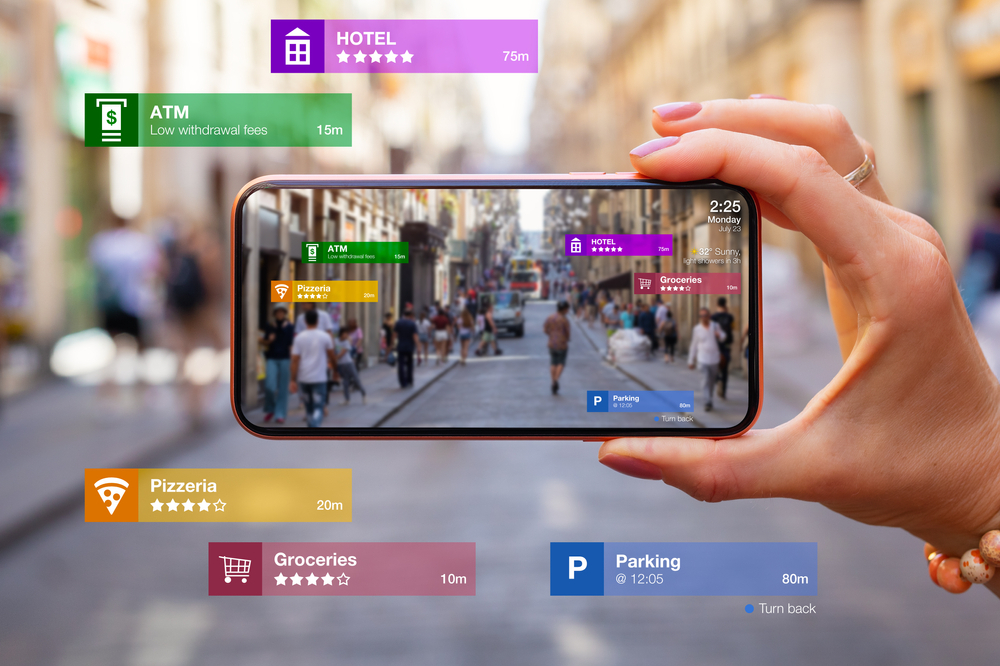VR headsets have been around for some time now. The Oculus Rift was launched in 2012, for example. This was followed by other companies launching their own devices like the HTC Vive and the PlayStation VR. They were mostly seen as a niche gaming equipment. Up until February 2, 2024, the day the Apple Vision Pro was launched.
It is a mixed reality (MR) headset developed by Apple. It is very expensive and just alright in its function. But being an amazing headset was not its impact. What it did was bring the headsets into the mainstream, as a device for interactive entertainment. A device that brings video games and entertainment on devices like the computer, tablet, and smartphone together.
26 million people used headsets in 2021 worldwide. This number is expected to shoot up to 70 million by 2026.
In this article, we go through the features that this technology will bring when it comes to the interactive entertainment industry. The possibilities of what a VR game development company could come up are exciting.
This change is happening now and very fast. It could completely modify the way we consume entertainment, whether through video games, movies, shows, music, podcasts, audiobooks, etc.
Let’s go!
Immersive Virtual Worlds
VR and immersive experiences go hand-in-hand. This technology transports us to a new world where we can explore, interact, and create with digital objects.
From the comfort of our home, we can traverse vast landscapes, interact with fantastical creatures and objects, and just…do a lot of different activities. This could be gaming, socializing, learning, teaching, and even working.
Even without being physically present, VR/AR allows the users to form emotional connections with the experiences and the people they interact with. The ‘level’ of immersion is already good enough to scare the user with heights and monsters or thrill them with a rollercoaster ride.
And it is only going to improve. It will become more realistic, integrate into our lives, and leave no distinction between the real and the virtual, if the user so chooses.
Interactive Storytelling Experiences
Enabling users to interact with virtual worlds makes the experience more engaging. As compared to passively watching something on a screen, users feel more invested because their actions change the world they are in. Incorporating AR game development services can further enhance this immersive experience by blending virtual elements with the real world, creating a seamless interaction between the two..
In the storytelling medium, VR gives users agency and a sense of control over how the stories and their characters turn out. Branching narratives, dynamic dialogue systems, and consequential decision-making make users care for the narrative. They can become part of the story if they so choose and face moral dilemmas, forge alliances, and uncover secrets.
Bandersnatch in VR?
Experiential Learning Platforms
Gamification, integrated with VR, could be the next frontier in education and learning. As an immersive medium, it solves the issue of keeping students engaged right off the bat. The interactive nature of the learning process makes the content more memorable and fun.
From K-12 education to corporate training and skills development, there is no age range or number of people who could access this technology. Users will learn by doing, tackling situations that mimic real life and solving fun puzzles.
It is simply better to learn how an engine is assembled or how the body works when you can take it apart and experiment with the components.
The AI element also comes into play to provide feedback and adapt the course to the individual’s abilities and preferences in real time. This way everyone can learn at their own pace.
Social and Collaborative Experiences
The most common criticism of interactive entertainment is the isolation it might develop in the users. But it is important to remember that this technology provides ample opportunity to meet people. Even if it is done digitally, users can foster meaningful connections with each other.
As players share virtual experiences, they will form a community and collaborate in activities. This can be a social platform or a multiplayer collaborative game. These experiences promote teamwork, communication, and cooperation. It gives them a sense of belonging.
The goal is not to imagine a world where interactive entertainment replaces traditional socializing or cuts into but actually adds another dimension to it.
“We’re already through the looking glass, Alice.”
There is no waiting for this evolution of traditional gaming to come. It is here and people are adopting it in their day-to-day, more-and-more.
New technologies are rapidly changing the entertainment landscape. So fast that even what’s popular today might become ‘old’ in just a decade; gone the way of the Dodo.
But this also signals untapped opportunities in interactive entertainment that have yet to be implemented.
Do you have ideas that can be implemented in interactive entertainment?
Why not hit up EDIIIE? We are a game design studio with a keen focus on VR/AR game development services.




